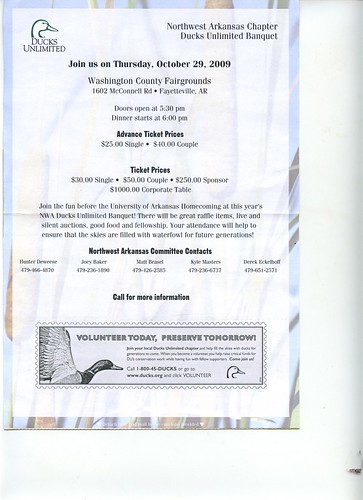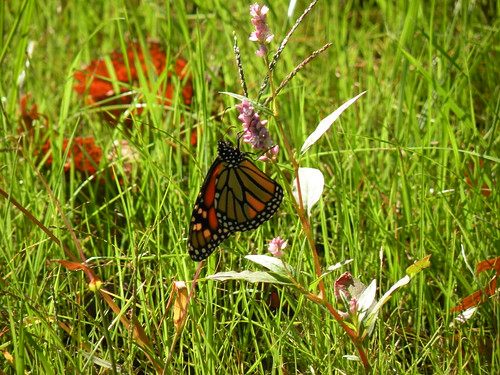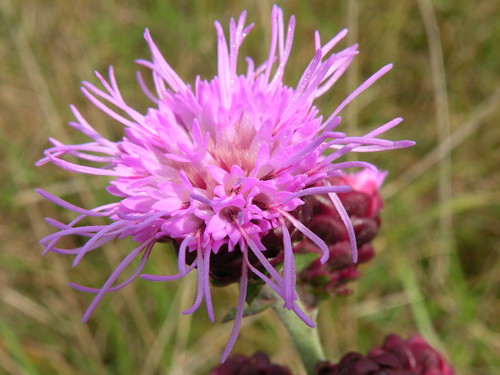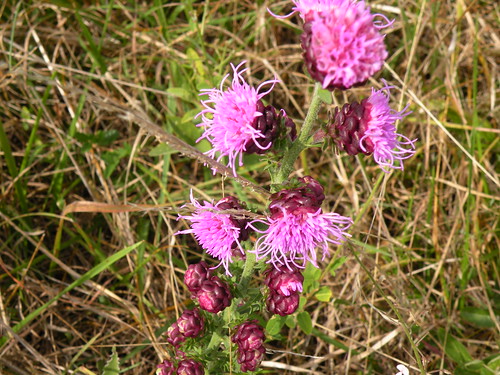Please click on image to ENLARGE photos of World Peace Wetland prairie on snowy December 25, 2009.
Friday, December 25, 2009
Thursday, December 24, 2009
Friday, December 11, 2009
Cedar waxwings showing up in big flocks on December 10, 2009, and eating every berry they can find
Please click on images to ENLARGE view of cedar waxwings at World Peace Wetland Prairie on December 10, 2009. Many species of birds have been passing through Northwest Arkansas this week after a massive winter storm pushed across the upper midwest.
Thursday, December 10, 2009
Audubon Arkansas open house from 4 to 7 p.m. today; Environmental Action Committee at 5:30 p.m. in Room 326 of city hall
THURSDAY, DECEMBER 10, 2009
Audubon Arkansas open house from 4 to 7 p.m. today; Environmental Action Committee at 5:30 p.m. in Room 326 of city hall
The Holiday Season is a busy time so here's a little reminder about our Holiday Open House! If you have not yet RSVP'd don't forget to drop us a line and let us know your are coming! We are looking forward to seeing everyone there!
Please Join Us
Thursday, December 10, 2009
From 4 p.m. to 7 p.m. at
34 East Center Street
Fayetteville, Arkansas
For the
Audubon Arkansas
Holiday Open House
The staff and board of Audubon Arkansas invite you to join us for food, refreshments, conversation and conservation. Spouses, children, and friends welcome.
Please RSVP to mviney@audubon.org
Wishing You Happy Holidays!!!
Audubon Arkansas open house from 4 to 7 p.m. today; Environmental Action Committee at 5:30 p.m. in Room 326 of city hall
The Holiday Season is a busy time so here's a little reminder about our Holiday Open House! If you have not yet RSVP'd don't forget to drop us a line and let us know your are coming! We are looking forward to seeing everyone there!
Please Join Us
Thursday, December 10, 2009
From 4 p.m. to 7 p.m. at
34 East Center Street
Fayetteville, Arkansas
For the
Audubon Arkansas
Holiday Open House
The staff and board of Audubon Arkansas invite you to join us for food, refreshments, conversation and conservation. Spouses, children, and friends welcome.
Please RSVP to mviney@audubon.org
Wishing You Happy Holidays!!!
Friday, December 4, 2009
Verbesina virginica among several species that serve in winter as ice plants! Find it early mornings in a variety of places in addition to World Peace Wetland Prairie
Please click on images to ENLARGE photo. Ice-plant displays are like snowflakes. No two are alike. Drive along roads with ditches that have not been mowed back all the way and spot Verbesina virginica with ice around its base on cold, clear mornings. ANOTHER REASON NOT to mow roadsides and old prairie areas. Sometimes, if the mowers haven't cut close to the ground but have taken off the tops of the often 6-foot-tall plants, the ice formations may be spotted by carefully watching for short stem remains.
Sunday, November 29, 2009
July 2009 included a dry spell that hurt the native plants such as swamp milkweed
Asclepias incarnata, the swamp milkweed, struggles during a dry summer such as July 2009.
Swamp milkweed
Aubrey james | MySpace Video
Swamp milkweed
Aubrey james | MySpace Video
Thursday, November 26, 2009
Two varieties of goldenrod identified beside the new city trail west of World Peace Wetland Prairie by Theo Witsell of the Arkansas Heritage Commission
Theo Witsell of the Arkansas Natural Heritage Commission points out big bluestem, little bluestem and broom sedge from Pinnacle Prairie Trail on west side of World Peace Wetland Prairie on November 21, 2009
Three of four tall-grass species right here, Witsell says
Aubrey james | MySpace Video
Theo Witsell and little bluestem vs broom sedge
Aubrey james | MySpace Video
Little bluestem
Scientific Name: Schizachyrium scoparium (Michx.) Nash.
Common Name: Little bluestem
Morphological Characteristics:
A native, perennial, warm season, long-lived bunchgrass. Culms are 1 to 4 feet tall, erect and large tufted, having occasional short rhizomes. Basal stems and sheaths are flattened. Leaf blades are hairless; V shaped in cross section, keeled, light blue-green when young turning reddish brown at maturity. Ligules 1/16 inch in length, membranous, with singed margins. Inflorescence consists of several unbranched racemes, one on the end of each seed stalk. Spikelets are paired along raceme axis; fertile one plump, awned and stalkless; sterile one stalked, awnless or awn tipped.
Little bluestem has a deep fibrous root system, and may be semi-sod forming in sub humid zones. As a warm season grass it begins growth in late spring and continues through the hot summer period until the first killing frost. It is easily mistaken for common broomsedge (Andropogon virginicus) except little bluestem has very flat bluish basal shoots. Broomsedge has a straight awn and has two or more stalked seed clusters per branch. Little bluestem has a twisted, bent awn and a single cluster of seeds per branch. Seacoast bluestem (Schizachyrium scoparium var. littorale) occurs only in the coastal plain region. It is very similar to little bluestem but can be distinguished by the bent stems at the base, whereas little bluestem stems are erect.
Little bluestem is one of the most widely distributed native grasses in North America. It will grow on a wide variety of soils but is very well adapted to well drained, medium to dry, infertile soils. The plant has excellent drought and fair shade tolerance, and fair to poor flood tolerance. It grows preferentially on sites with pH 7.0 and slightly higher.
Conservation Use:
Why collect this plant?
In north-central Texas there is a lack of locally-adapted native (ecotypic) plant materials for use in revegetation projects. The North Texas Ecotype Project (NTEP) was established to conserve the culturally, historically, and ecologically important native plants of north-central Texas, and promote their use for revegetation projects.
The Knox City Plant Materials Center in cooperation with NTEP have identified little bluestem as a plant meeting project objectives. Plant and seed collections supporting NTEP are targeted for 43 counties located within all or portions of 6 vegetation areas in north-central Texas including: Blackland Prairie, East Cross Timbers, Fort Worth Prairie, Lampasas Cut Plain, West Cross Timbers and Rolling Plains.
Future ecotypes developed will benefits the following conservation practice standards: 645 Upland Wildlife Habitat Management; 342 Critical Area Planting; 562 Recreation Area Improvement; 550 Range Planting; 327 Conservation Cover; 643 Restoration and Management of Rare or Declining Habitats.
Your assistance in collecting this plant helps support the NRCS conservation practice standards which are employed daily to conserve the natural resources of Texas!
Center Requesting Seed:
Knox City Plant Materials Center
How to Collect Seed:
Identify native plant stands in your area. You can go to the following websites for helpful photos http://plants.usda.gov or http://www.noble.org/imagegallery/index.html or www.wildflower.org
Determine if seed is mature. Mature seed is typically dry and will easily separate from the seed head.
Hand strip mature seed by grasping the bottom of the seed head then gently pulling away from the base of the plant. Deposit seed in a brown paper sack. Collect seed from a minimum of 30 to 50 plants.
Label each collection as it is made so collections do not get mixed up. Information required includes: Collector’s name, number of plants collected, location (parish, city, highway, and GPS coordinates), site description (soil type, slope, and plants growing in association).
Complete NRCS-ECS-580; Plant Collection Information Form and mail with collected seeds to the NRCS Plant Materials Center requesting the species.
Knox City Plant Materials Center
3776 FM 1292
Knox City, TX 79529-2514
Helpful Tips:
Look for superior plants that display differences in color, height, or forage abundance and record observations. Differences in growing site or location should be made into separate collections if they are separated by more than 1 mile between sites.
Broomsedge
Andropogon virginicus
Broomgrass, Broomsage, Broomsedge bluestem, Broomstraw, Sage grass, Yellow bluestem
Grass
Several stems may arise from each clump of broomsedge. They will turn yellow-tan in the fall.
©James H. Miller, USDA-NRCS Plants Database
Broomsedge seeds are small and hairy.
©James H. Miller, USDA-NRCS Plants Database
Description
This native warm-season grass is often confused with little bluestem. Compared with little bluestem, broomsedge stems are the more flattened and more densely leafed. Also, broomsedge in the fall/winter is typically yellowish tan, while little bluestem has a bronzy color. It is usually no more than 2 feet tall at maturity. Seeds are light and fluffy. Dense stands are often indicative of acid soils, phosphorus deficiency or overgrazing. Lime and fertilizer application may cause broomsedge to decline or disappear.
Use by bobwhites
Broomsedge's clumpy growth and fine leaves and stems make it an excellent grass for nesting, and the height is preferred for roosting. Stands of broomsedge tend to be "weedy," supporting a diverse mix of annual plants that provide further benefits for bobwhites.
Compare the cross section of a broomsedge stem with that of little bluestem. Broomsedge is more flattened.
Tuesday, November 24, 2009
Instructions that Natural Resources Conservation Service contractors are supposed to be following
Monday, November 23, 2009
Friday, November 20, 2009
Saturday, November 7, 2009
Friday, November 6, 2009
Monday, November 2, 2009
Thursday, October 15, 2009
Ducks Unlimited Banquet October 29, 2009, in Fayetteville, Arkansas
Ducks Unlimited Banquet October 29, 2009, in Fayetteville, Arkansas
Tuesday, October 13, 2009
Green Groups Guild meeting Thursday
From: Green Groups Guild (ggg@listserv.uark.edu) on behalf of ggg (ggg@UARK.EDU)
Sent: Tue 10/13/09 2:31 PM
To: GGG@LISTSERV.UARK.EDU
Meeting 10/15/09 7:00 p.m.
209 Thompson Ave. Three Sisters Bldg on Dickson above Fez Hookah Lounge.
Patrick Kunnecke
GGG President
ASLA Vice President
4th Year Landscape Architecture Student
479-544-1906
Sent: Tue 10/13/09 2:31 PM
To: GGG@LISTSERV.UARK.EDU
Meeting 10/15/09 7:00 p.m.
209 Thompson Ave. Three Sisters Bldg on Dickson above Fez Hookah Lounge.
Patrick Kunnecke
GGG President
ASLA Vice President
4th Year Landscape Architecture Student
479-544-1906
Saturday, October 10, 2009
Buttonbushes on Pinnacle Prairie going to seed in October 2009
Tuesday, October 6, 2009
Runners and Sponsors sought for Nov. 7, 2009, 5K veterans' memorial race to benefit Fayetteville National Cemetery
Please click on image to move to Flickr site and ENLARGE for easy reading. The Regional National Cemetery Improvement Corporation meets at 10:30 a.m. Saturday October 10 and needs to add sponsor names to the file for the race T shirts and the brochures so that printing can begin. Already, Tyson Foods has donated at the Medal of Honor level and has challenged others to join them at the top of the list, thanks to the effort of RNCIC Secretary Peggy McClain.


Monday, October 5, 2009
Monarch butterfly on final days of September 2009 shows the perseverance of all earth's life in fighting to the end to survive and reproduce just one more time
Despite damaged wings, a migrating male monarch butterfly at World Peace Wetland Prairie collects nectar in preparation for the long flight to Mexico. If he can keep up with the other migrants and survive a hard winter in a Mexican tree and fly back to the U.S. in April or May he may father a new few members of a new generation. Or maybe his time has about passed and he won't be among the chosen (or selected). But failing to persevere isn't a concept that he understands.
Saturday, October 3, 2009
Buckeye butterfly on World Peace wetland prairie on October 2, 2009
Please click on image to go to Flickr site and ENLARGE view of buckeye butterfly on Ovtober 2, 2009.
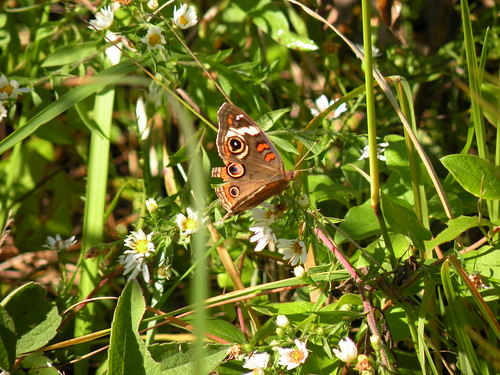
The Buckeye Butterfly (Precis coenia) is widespread and easily recognized by its prominent eyespots that probably help protect against inexperienced birds. Adult males patrol a territory and wait for females to fly overhead. In fact, they'll fly after any insect to investigate only to return to their post if the passerby is not a female Buckeye. Because adults can't over-winter in cold climates, large scale southern migrations of Buckeye butterflies can be found along the East coast of America in the Autumn. Adults live for a little over a week. Dark green eggs are laid on figwort and plantain plants. The caterpillar is dark and has yellow stripes and dark spines.

The Buckeye Butterfly (Precis coenia) is widespread and easily recognized by its prominent eyespots that probably help protect against inexperienced birds. Adult males patrol a territory and wait for females to fly overhead. In fact, they'll fly after any insect to investigate only to return to their post if the passerby is not a female Buckeye. Because adults can't over-winter in cold climates, large scale southern migrations of Buckeye butterflies can be found along the East coast of America in the Autumn. Adults live for a little over a week. Dark green eggs are laid on figwort and plantain plants. The caterpillar is dark and has yellow stripes and dark spines.
Friday, October 2, 2009
Monarchs continue migrating southwest across Northwest Arkansas on October 2, 2009
Tuesday, September 29, 2009
Wednesday, August 26, 2009
More blazing star
Sunday, August 23, 2009
Saturday, August 22, 2009
Monarch butterfly, caterpillars and grasshopper on milkweed on August 21 and 22, 2009
Please click on top image to ENLARGE view of monarch butterfly nectaring on swamp milkweed on August 21, 2009.

Please click on images to ENLARGE view of swamp milkweed with several tiny monarch butterfly caterpillars and a green grasshopper feeding on something. Is he in charge of birth control for butterflies, reducing the population so that some few caterpillars will be able to get to adulthood as monarchs?




Please click on images to ENLARGE view of swamp milkweed with several tiny monarch butterfly caterpillars and a green grasshopper feeding on something. Is he in charge of birth control for butterflies, reducing the population so that some few caterpillars will be able to get to adulthood as monarchs?



Thursday, August 20, 2009
Karst map of NW Arkansas significant tool for identifying green infrastructure deserving of protection
Please click on images to ENLARGE to read and see detail.


http://watershedwarrior.blogspot.com
The Town Branch Neighborhood is the smallest rectangle on that map. Enlarge the chart to read it.
Our neighborhood is a small hotspot for groundwater recharge and you can see how the wetland with springs and depressed land coincides with the karst coloring when you click and blow up the map.
Although the Nature Conservancy guys who created it admit that more ontheground investigation (and underground) to confirm a stricter scientific map is needed, it matches what I have believed about our neighborhood for some time. You can see the national cemetery circle with the karst just to the north along the old alley between Gov ave and Hill ave and pinnacle and wpwp are bright as is my own yard!
Please note one particular error. Cato Springs Branch, a northeast-flowing tributary of the Town Branch, is mistakenly called the Town Branch on the map. The oldest available government maps mark the portion of the Town Branch that flows from the UA and through our neighborhood as the Town Branch.
This is a significant tool for working on green-infrastructure plans and the FNHA already has it but in PDFs, which I can't post on the blogs.
Aubrey James Shepherd


http://watershedwarrior.blogspot.com
The Town Branch Neighborhood is the smallest rectangle on that map. Enlarge the chart to read it.
Our neighborhood is a small hotspot for groundwater recharge and you can see how the wetland with springs and depressed land coincides with the karst coloring when you click and blow up the map.
Although the Nature Conservancy guys who created it admit that more ontheground investigation (and underground) to confirm a stricter scientific map is needed, it matches what I have believed about our neighborhood for some time. You can see the national cemetery circle with the karst just to the north along the old alley between Gov ave and Hill ave and pinnacle and wpwp are bright as is my own yard!
Please note one particular error. Cato Springs Branch, a northeast-flowing tributary of the Town Branch, is mistakenly called the Town Branch on the map. The oldest available government maps mark the portion of the Town Branch that flows from the UA and through our neighborhood as the Town Branch.
This is a significant tool for working on green-infrastructure plans and the FNHA already has it but in PDFs, which I can't post on the blogs.
Aubrey James Shepherd
Monday, August 17, 2009
Butterfly nectars on inflorescence of Verbesina virginica on August 17, 2009, at World Peace Wetland Prairie
Saturday, August 15, 2009
Peter Carrington identified this tiny flower as Sida spinosa, a member of the family Malvaceae
Please click on image to ENLARGE view of tiny Sida spinosa that I don't remember seeing before but which came up voluntarily from fill dirt spread as topsoil on the new parkland adjacent to World Peace Wetland Prairie. I would like to know as soon as possible whether this is native, how invasive it may be, etc. It may already exist on WPWP but I don't think so. If it is allowed to stay, then it will join the WPWP mix, and WPWP volunteers are trying to remove invasive species.

The fill dirt on top of the park is to be dug out. If this and many other volunteer plants on the new park are invasive, the dirt must not be deposited anywhere along the new trail across Pinnacle Prairie or near WPWP.

The fill dirt on top of the park is to be dug out. If this and many other volunteer plants on the new park are invasive, the dirt must not be deposited anywhere along the new trail across Pinnacle Prairie or near WPWP.
Insects and flowers: Ya can't one, ya can't have none without the other!
Saturday, August 8, 2009
Friday, August 7, 2009
Spotted, metallic-shiny grasshopper visits swamp milkweed on August 7, 2009
Pinnacle Foods' wet prairie native wildflowers on August 7, 2009, adjacent new to city trail between 12th Street and Hill Place student apartments
Please click on images to ENLARGE view of wild native flowers on Pinnacle wet prairie immediately west of World Peace Wetland Prairie on August 7, 2009.



P
Third photo shows Illinois bundle flower on August 7, 2009. Desmanthus illinoensis is its scientific name. For more information, please see http://www.landinstitute.org/vnews/display.v/ART/2003/01/15/3e774f4876885

Bottom photo displays hairy wild petunia with a pollinator on it on August 7, 2009. Ruellia humilis is its scientific name and it is a member of the Acanthus family (Acanthaceae) For more information, please see http://www.illinoiswildflowers.info/prairie/plantx/hw_petuniax.htm



P
Third photo shows Illinois bundle flower on August 7, 2009. Desmanthus illinoensis is its scientific name. For more information, please see http://www.landinstitute.org/vnews/display.v/ART/2003/01/15/3e774f4876885

Bottom photo displays hairy wild petunia with a pollinator on it on August 7, 2009. Ruellia humilis is its scientific name and it is a member of the Acanthus family (Acanthaceae) For more information, please see http://www.illinoiswildflowers.info/prairie/plantx/hw_petuniax.htm
Subscribe to:
Posts (Atom)





















